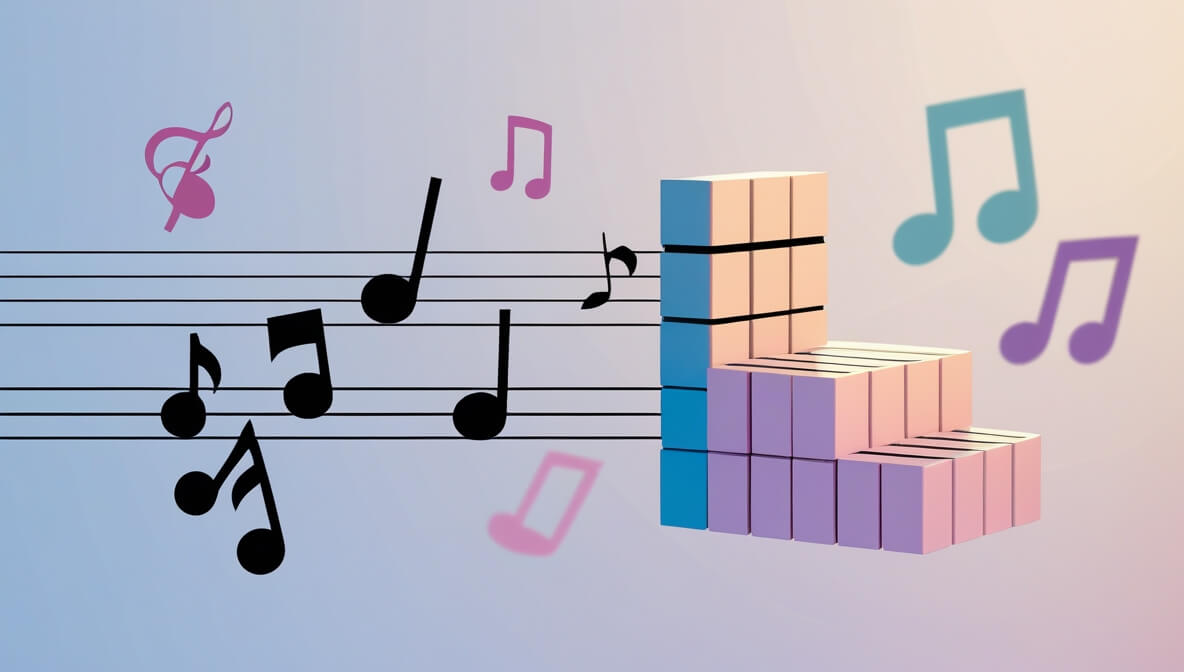Music, at its core, is a language made of sounds, rhythms, and emotions. Among its foundational elements, two stand out as especially important: melody and harmony. While they often work together seamlessly in a song, they serve very different roles.
Whether you're learning to play an instrument, writing music, or simply want to understand what you’re hearing, getting a clear grasp of melody and harmony will transform how you engage with music.
Let’s break down the difference between these two elements, explore examples, and explain why both are essential to creating music that resonates.
What is Melody?
A melody is the series of notes that unfolds over time—usually the part of the music that sticks in your head. It’s the main voice of a musical piece, often described as the "tune."
Characteristics of Melody:
- Linear movement: Notes are played or sung one after another, not at the same time.
- Pitch and rhythm: Melodies combine different pitches (notes) with varying rhythms to form musical phrases.
- Emotionally expressive: Melodies can be uplifting, haunting, dramatic, or joyful.
- Memorability: The catchiest part of most songs is the melody—it's what we whistle, hum, or sing along to.
Real-World Example:
- Think of the song "Let It Be" by The Beatles. The part that goes, “When I find myself in times of trouble, Mother Mary comes to me…”—that’s the melody. It’s a distinct line of notes, carried by a single vocal or instrument, and it’s the first thing most people notice or remember about the song.
What is Harmony?
Harmony is what happens when multiple notes are played at the same time. It supports the melody and adds richness, complexity, and mood to the music. Without harmony, melodies can sound thin or incomplete.
Characteristics of Harmony:
- Simultaneous notes: Harmony is created when two or more notes are played or sung together.
- Chordal structure: Most harmonies are built from chords, which are combinations of three or more notes.
- Emotional color: The type of harmony (major, minor, diminished, etc.) influences how a piece of music feels—whether it’s happy, sad, suspenseful, or dreamy.
- Background or support role: Harmony typically doesn’t stand out on its own but serves to complement and enrich the melody.
Real-World Example:
- In a choir, the lead soprano might sing the melody, while the altos, tenors, and basses sing different notes that blend together—creating lush, supportive harmonies. Or in pop music, the background vocals and instrumental chords form the harmonic bed that the melody floats on.
Key Differences Between Melody and Harmony
Although they often work together seamlessly, melody and harmony are fundamentally different in their musical roles.
- Melody is a single sequence of notes arranged to form a musical line.
- Harmony is the combination of notes played or sung at the same time.
- Melody is horizontal, moving through time note by note.
- Harmony is vertical, stacking sounds together at each moment.
- Melody usually takes center stage, while harmony supports and deepens the overall sound.
Why Melody and Harmony Matter Together
Melody and harmony work as a musical team. A beautiful melody can stand alone, but when layered with a fitting harmony, it becomes more emotionally powerful and complete.
- A melody gives a song its identity—it's the part that listeners connect with and remember.
- Harmony adds emotional depth and context to that melody—making it joyful, melancholic, tense, or serene.
- Together, they create the kind of full, expressive music that tells stories and evokes emotions.
For example, a simple melody can sound entirely different when harmonized with major versus minor chords. This is how film composers shift the emotional tone of a scene without changing the melody itself—just the harmony underneath.
Want to Go Deeper? Explore These Music Theory Essentials:
Final Thoughts
Whether you're analyzing your favorite songs or creating your own, understanding the difference between melody and harmony helps unlock the language of music. Melody captures attention and emotion. Harmony provides the depth, support, and structure. Together, they form the heart of every powerful composition.
